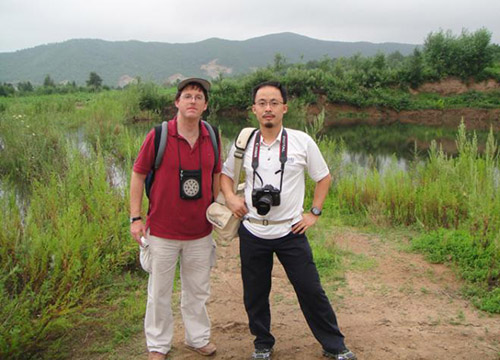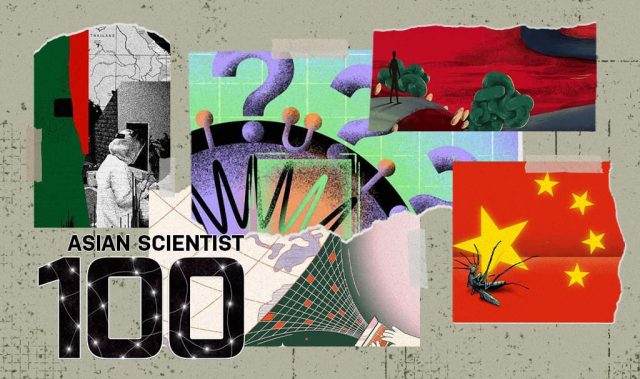
AsianScientist (May 22, 2015) – By Sim Shuzhen – Currency exchange rates probably only concern most of us just before we go away on holiday. On a macroeconomic level, however, exchange rates not only affect the global competitiveness of a country’s exports, but also contribute to the stability of its trading and investment environment. This is particularly the case for heavily export-dependent economies, which are typical of Asian countries.
“Before the 1997-98 Asian financial crisis, the region was in practice a dollar bloc. The de facto pegging of East Asian currencies to the US dollar led to the problem of currency mismatches that contributed to the crisis,” says Professor Chow Hwee Kwan, of Economics and Statistics (Practice) at the Singapore Management University (SMU) School of Economics.
Although the crisis forced some countries to temporarily abandon the dollar peg, exchange rates in the region quickly went back to tracking the US dollar in its aftermath. With the US dollar as an external anchor, regional exchange rates stabilized. Since trade in parts and components is particularly sensitive to volatility in exchange rates, this stability aided the development of regional production networks, says Chow.
The managing of currency exchange rates is thus a key policy decision that governments do not undertake lightly. Chow’s research focuses on how Asian countries manage their currencies and the impact of these policies on their economies.
The yuan as a global currency?
One of Chow’s research interests is China, which has recently sought to broaden the international use of the yuan. China’s use of the yuan for cross-border transactions reached 9.95 trillion yuan (US$1.63 trillion) in 2014, accounting for nearly a quarter of all its cross-border transactions. According to the Society for the Worldwide Interbank Financial Telecommunication (SWIFT), the coordinating organisation for international transactions, the yuan is now the fifth most-used currency for international payments.
These developments have led to claims of a yuan bloc emerging in Asia. Chow’s research shows that as the yuan gradually delinked itself from the US dollar in the aftermath of the 2008 global financial crisis, it indeed exerted a greater influence on the movement of regional currencies. But it has yet to replace the US dollar, which as the incumbent pre-eminent international currency still enjoys the advantage of network effects.
Some economists who previously claimed that the yuan has already surpassed the US dollar as Asia’s key reference currency did not address two important issues in their analysis, says Chow. Firstly, China still benchmarks the yuan to the US dollar even when it exited from a fixed exchange rate system, thus making it practically difficult to distinguish between fluctuations in the two currencies. Secondly, the yuan and other Asian currencies are exposed to common regional shocks and these tend to exaggerate the influence of the yuan on regional exchange rates.
“I applied an alternative econometric methodology that overcomes these two problems in order to produce better estimates of the relative influence of renminbi (yuan) and the US dollar on Asian currencies,” explains Chow.
Despite China’s efforts to promote the yuan as an international currency, its value remains tightly controlled by Beijing.
“China needs to reform its domestic financial sector and liberalize its capital account before the renminbi (yuan) can become a regional lead currency,” she says.
Reading global developments to formulate research questions
Prior to her arrival at the SMU School of Economics, Chow worked in both the public and private sectors. She has also consulted for multilateral organisations such as the Asian Development Bank and the ASEAN+3 Macroeconomic Research Office on various projects. This diverse professional experience has shaped her approach to her research.
“My experience outside academia helped me see the practical relevance of certain academic research and raised my interest in applying research techniques to investigate policy-related questions,” she says.
To answer her research questions, Chow says it can be challenging to obtain economic data that spans a sufficiently long time period to allow for patterns or correlations to emerge.
“Since my research is mostly of an empirical nature, availability of data that are comparable across different countries is vital,” she notes.
And as was the case for the China study, alternative methodologies such as the one she proposed may provide a different perspective to the research question, she says.
Anticipating far-reaching effects of monetary policy change
As a future research question, Chow is interested in how changes in monetary policy in the West will impact Asia.
To deal with the fallout from the 2008 global financial crisis, Western countries resorted to unconventional measures: the US and Britain, for example, implemented quantitative easing, a process in which new money is created by central banks and used to buy financial assets such as government bonds. This measure increases the amount of cash in the system and encourages financial institutions to lend to businesses and individuals, thus spurring growth.
After several years of this, the US recently announced that, having met its targets for reducing inflation and unemployment, it would soon end its quantitative easing program. Since quantitative easing has also led to increased capital flow into emerging markets, including Asian economies, monetary authorities in Asia are concerned about how this impending normalization of monetary policy will affect them, Chow explains.
“It would be interesting to research on the impact in Asia of such unwinding of unconventional monetary policies, as well as consider policy implications,” she says.
Asian Scientist Magazine is a media partner of the Singapore Management University Office of Research.
——
Copyright: SMU Office of Research. Read the original article here; Photo: Cyril Ng.
Disclaimer: This article does not necessarily reflect the views of AsianScientist or its staff.












